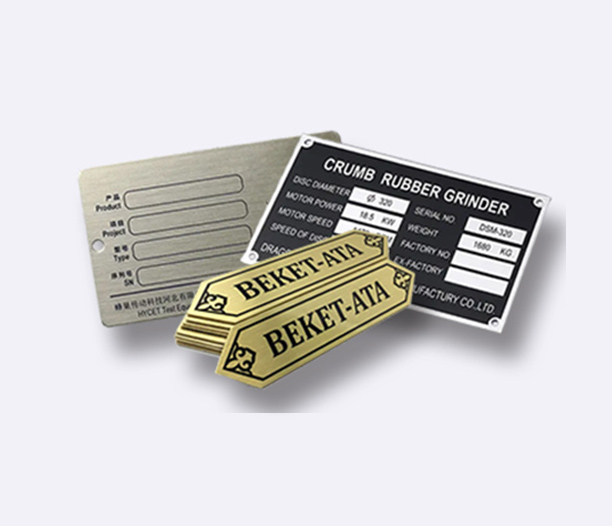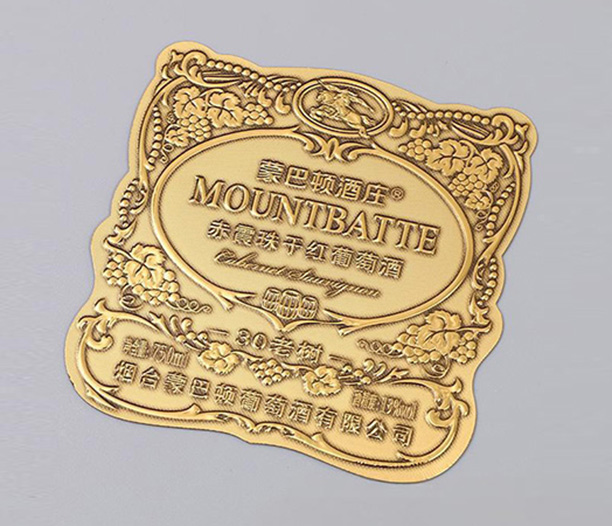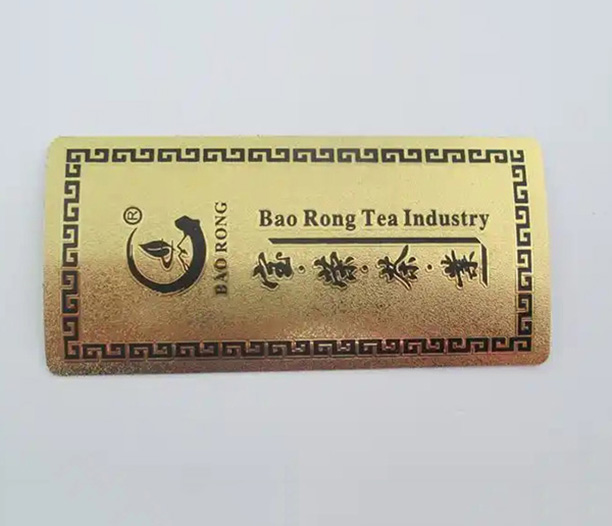If you’ve ever walked through an industrial facility, inspected machinery, or even admired a high-end product, you’ve probably noticed small metal tags or labels attached to equipment, tools, or devices. These unassuming markers—often called fade-resistant metal nameplates—play a critical role in identification, branding, and safety. But have you ever wondered why some of these labels stay crisp and legible for decades, while others peel, crack, or fade within months?
The secret lies in the science of materials, coatings, and manufacturing techniques engineered to combat environmental wear and tear. In this deep dive, we’ll explore how fade-resistant metal nameplates defy the odds and deliver long-lasting performance, even in harsh conditions. Let’s break it down.
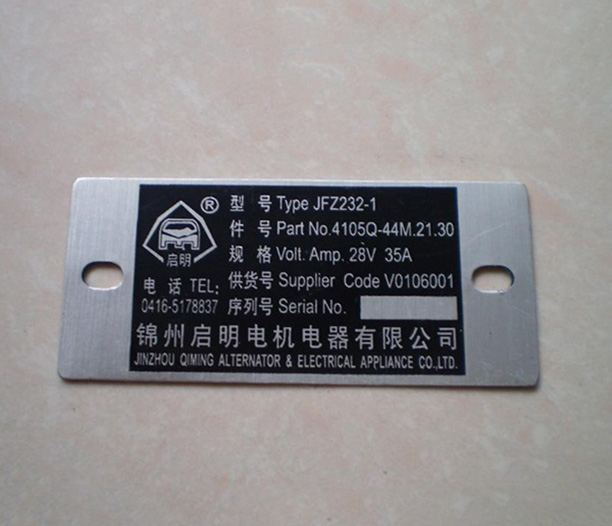
1. What Makes Metal Nameplates “Fade-Resistant”?
Fade-resistant metal nameplates are designed to withstand UV exposure, moisture, chemicals, abrasion, and temperature fluctuations without losing their visual or structural integrity. Unlike standard labels or stickers, these nameplates are crafted from durable metals like stainless steel, aluminum, brass, or zinc alloy. But the real magic happens in the combination of base materials and protective treatments.
Key factors that ensure longevity:
- Material Selection: Stainless steel and aluminum are top choices due to their natural corrosion resistance.
- Surface Treatments: Techniques like anodizing (for aluminum) or powder coating create a barrier against environmental stressors.
- Engraving and Etching: Laser or chemical etching ensures text and graphics are embedded into the metal, rather than printed on the surface.
The phrase “fade-resistant metal nameplates” isn’t just marketing jargon—it’s a promise backed by chemistry and physics.
2. The Role of Advanced Coatings and Finishes
Think of coatings as the “armor” for metal nameplates. Without them, even the toughest metals can succumb to rust, fading, or discoloration over time. Here’s how modern finishes keep these labels looking new:
Anodizing (For Aluminum Nameplates)
Anodizing involves electrochemically thickening the natural oxide layer on aluminum. This process not only enhances corrosion resistance but also allows for dye infusion, creating vibrant colors that won’t chip or peel. Anodized fade-resistant metal nameplates are common in aerospace and marine environments, where saltwater and humidity are constant threats.
Powder Coating
Powder coating uses a dry polymer resin that’s electrostatically applied and then baked onto the metal surface. The result? A thick, uniform layer that resists scratches, UV rays, and chemicals. This method is popular for industrial equipment nameplates exposed to oils, solvents, or extreme temperatures.
Clear Coat Sealants
For nameplates with intricate designs or logos, a clear protective sealant can be applied over printed graphics. This transparent layer acts like a shield, preventing ink from fading due to sunlight or abrasion.
3. Laser Technology: Precision That Lasts
Traditional printing methods (like screen printing or pad printing) deposit ink on top of a metal surface. Over time, this ink can wear off, especially in high-traffic areas. Laser engraving, however, removes material to create permanent marks.
Why lasers are a game-changer:
- Depth and Permanence: Lasers burn patterns into the metal, ensuring text and logos remain legible even after years of use.
- No Ink, No Fading: Since there’s no pigment involved, laser-engraved fade-resistant metal nameplates won’t fade from UV exposure.
- Customization: Lasers can produce ultra-fine details, making them ideal for serial numbers, QR codes, or tiny safety warnings.
From medical devices to outdoor machinery, laser-engraved nameplates are the gold standard for durability.
4. Environmental Testing: Proving Durability in the Lab
How do manufacturers guarantee that fade-resistant metal nameplates will perform in the real world? Rigorous testing simulates years of abuse in a matter of days.
Common tests include:
- QUV Accelerated Weathering: Nameplates are exposed to intense UV light and humidity cycles to mimic sunlight degradation.
- Salt Spray Testing: Samples are sprayed with a saltwater mist to evaluate corrosion resistance (critical for marine or coastal applications).
- Abrasion Resistance: Machines rub nameplates with abrasive materials to test scratch resistance.
Only nameplates that pass these trials earn the “fade-resistant” label.
5. Applications: Where Fade-Resistant Nameplates Shine
Fade-resistant metal nameplates aren’t just for heavy industry. Their versatility makes them essential across sectors:
- Aerospace and Defense: Equipment must endure extreme temperatures, fuel exposure, and vibration.
- Medical Devices: Nameplates need to survive repeated sterilization with harsh chemicals.
- Consumer Electronics: Premium brands use metal labels to convey luxury and durability.
- Outdoor Infrastructure: Think traffic signs, solar panels, or utility markers exposed to decades of weather.
In each case, fade-resistant metal nameplates provide reliable identification that outlasts the product itself.
6. Cost vs. Longevity: Why Investing in Quality Pays Off
Sure, fade-resistant metal nameplates cost more upfront than plastic stickers or cheap imprints. But consider the hidden expenses of not using them:
- Frequent replacements due to fading or damage.
- Safety risks if warnings or ratings become illegible.
- Brand reputation damage from worn-out logos.
For industries where compliance and safety are non-negotiable, durable nameplates are a smart, long-term investment.
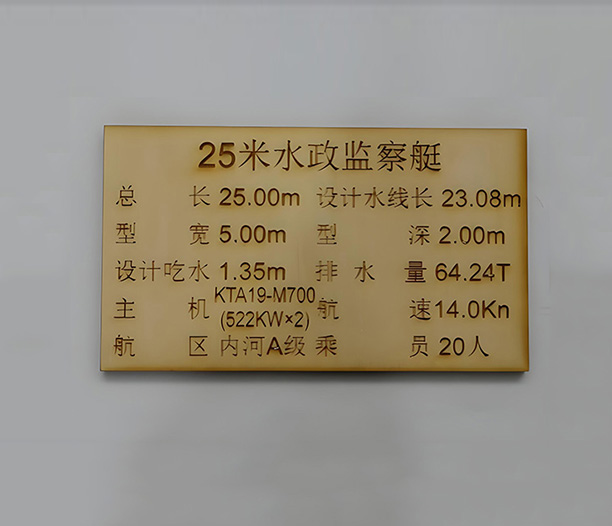
7. Choosing the Right Supplier: What to Look For
Not all metal nameplates are created equal. When sourcing fade-resistant options, ask suppliers:
- What materials and coatings do they use?
- Do they offer custom testing for your specific environment?
- Can they provide case studies or client testimonials?
A reputable supplier will collaborate with you to balance aesthetics, durability, and budget.
8. The Future of Fade-Resistant Technology
Innovation never stops. Emerging trends include:
- Nanocoatings: Ultra-thin protective layers that repel water, oil, and graffiti.
- Smart Nameplates: Embedded RFID chips or sensors for tracking and data collection.
- Sustainable Materials: Recycled metals and eco-friendly coatings to reduce environmental impact.
As technology evolves, so will the science behind fade-resistant metal nameplates.
Conclusion: Durability Meets Design
Fade-resistant metal nameplates are a fusion of engineering and artistry. By leveraging robust materials, advanced coatings, and precision manufacturing, these labels solve a universal problem: how to keep critical information visible and intact, no matter the environment. Whether you’re labeling a spacecraft or a kitchen appliance, investing in fade-resistant technology ensures your message stands the test of time—literally.
So next time you see a weathered piece of equipment with a pristine metal nameplate, you’ll know the science that makes it possible. And if you’re sourcing nameplates for your own projects, remember: quality isn’t an expense, it’s an insurance policy.



